Best Smart TV 2018: Every smart TV platform ranked, rated and reviewed
A smart TV buying guide has never been more useful than it is today: almost every set sold in 2018 has some kind of smart TV platform on board, and choosing between them isn't always easy. And that's where we come in.
We've come a long way from the early days of TV software, marked by awful performance and non-existent updates, and for that we should be grateful.
Now, smart TV platforms like webOS, Tizen, Roku TV and Android TV lead the charge: polished, easy to use, and ready to deliver some serious entertainment. Today's best smart TV platforms actually enhance the viewing experience, with recommendations, voice control, and more besides.
So, what's the best smart TV platform you can buy? We've ranked the the world's major connected TV platforms, putting equal emphasis on ease of use, functionality, stability and content support. After you've checked out our Smart TV primer, we've gone ahead and listed the best picks in each category below - plus, you can click through to the next page to see a detailed break down of every platform.
Smart TV: The State of the Union
So just where do we stand on Smart TVs? Do you know your Roku TV from your SmartCast? Your Tizen from webOS? If not, this section is for you.
In 2018, there are five main smart operating systems: Android TV, webOS, Tizen, Roku TV and SmartCast that are used by Sony, LG, Samsung, TCL and Vizio, respectively. In the UK, you'll find that Philips also uses Android while Panasonic uses its own proprietary system called MyHomeScreen.
The vast majority of TVs use the operating systems listed above - but not all TVs. At lower price points, you probably won't find any of the above as most TV manufacturers offer a narrow proprietary service instead. These will vary between manufacturers, however, by and large, they're not as good as the ones listed above for the sheer reason that they aren't updated as frequently.
When in doubt, try to buy one a TV with one of the above.
That said, if you're completely undecided on which smart TV to buy, it's worth considering the value of each of these smart systems - which we'll list below.
(Scale: Awful, Bad, OK, Good, Better, Best)
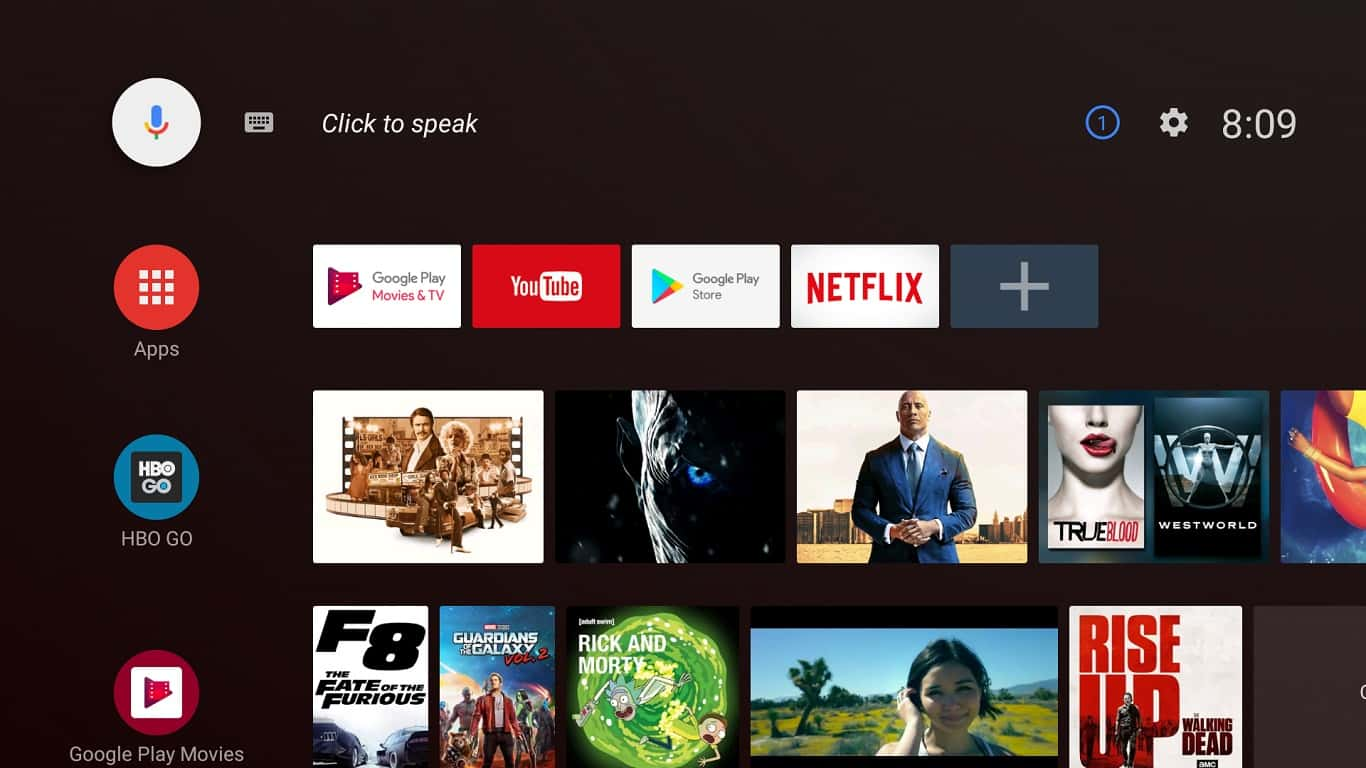
Android TV (found on 2018 Sony 4K and OLED TVs)
Setup: OK | Ease of use: Good | Speed: OK | Number of apps: Better | Universal search: Better
- Pros: Recommended content row. Clean layout.
- Cons: Most builds are very buggy and prone to crashing.

WebOS (found on 2018 LG OLED, Super UHD and some UHD TVs)
Setup: OK | Ease of use: Good | Speed: Better | Number of apps: Bad | Universal search: OK
- Pros: Alexa and Google Assistant integration. Fast to navigate.
- Cons: The least robust in terms of apps of all the smart TV platforms.
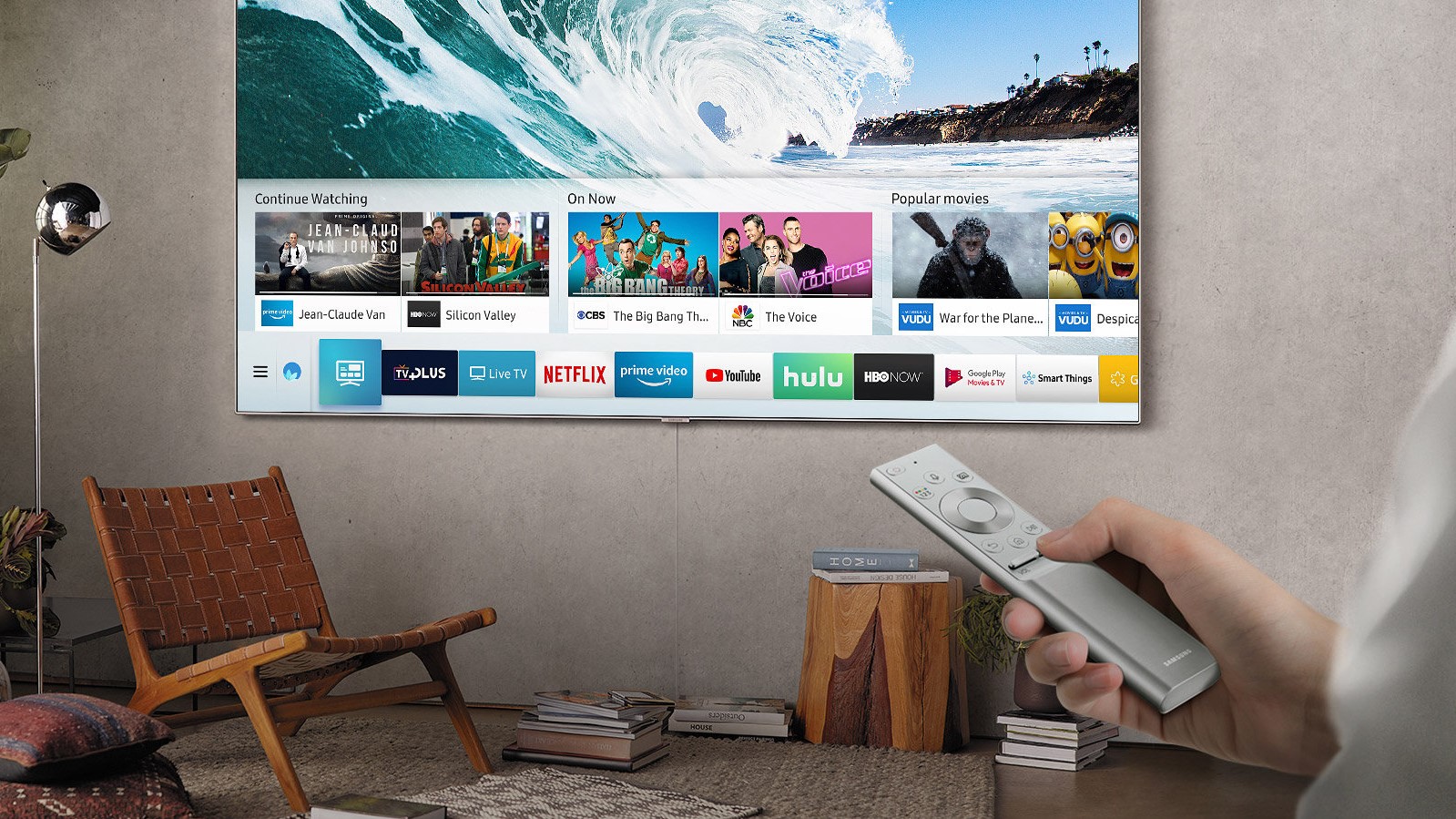
Tizen (found on Samsung 2018 QLED and NU-Series TVs)
Setup: Good | Ease of use: Good | Speed: Better | Number of apps: Bad | Universal search: Bad
- Pros: TV Plus offers free channels. Fast to navigate.
- Cons: Universal search can be hit or miss.
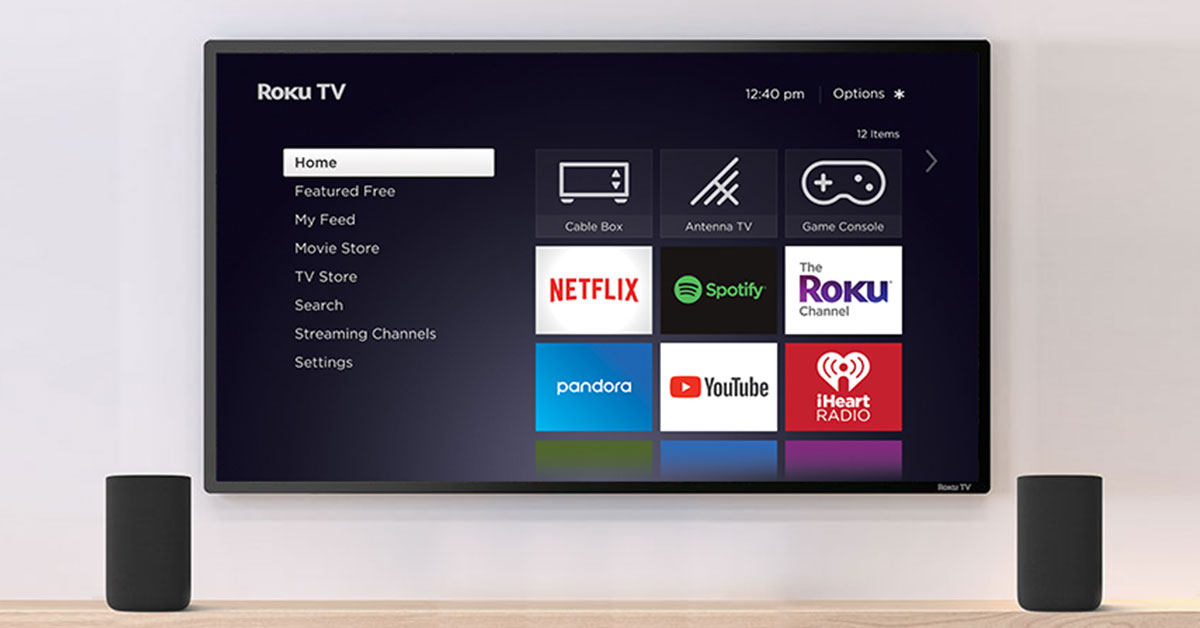
Roku TV (found on 2018 TCL and Hisense TVs)
Setup: OK | Ease of use: Better | Speed: Better | Number of apps: Good | Universal search: Best
- Pros: Best universal search. Very easy to use.
- Cons: Interface feels a bit plain in 2018.
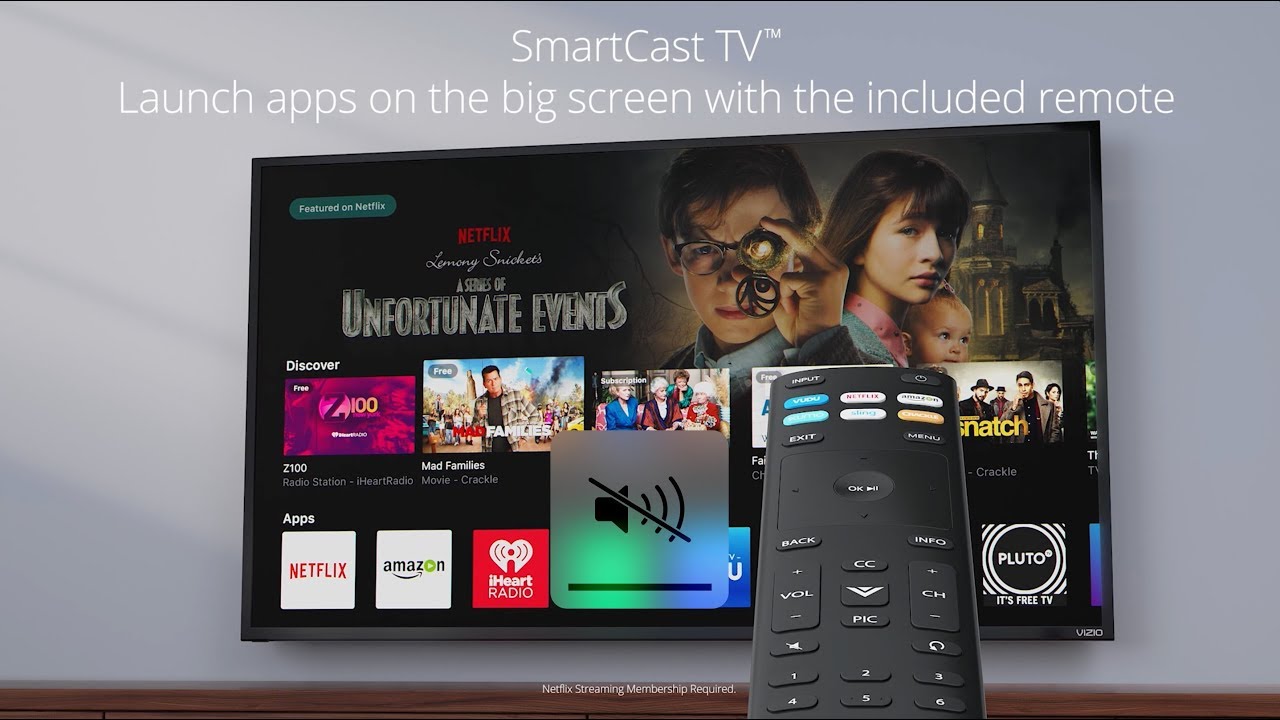
SmartCast (found on 2018 Vizio TVs)
Setup: OK | Ease of use: OK | Speed: Bad | Number of apps: Good | Universal search: OK
- Pros: Has Google Chromecast built-in.
- Cons: Slower than most other TV operating systems.
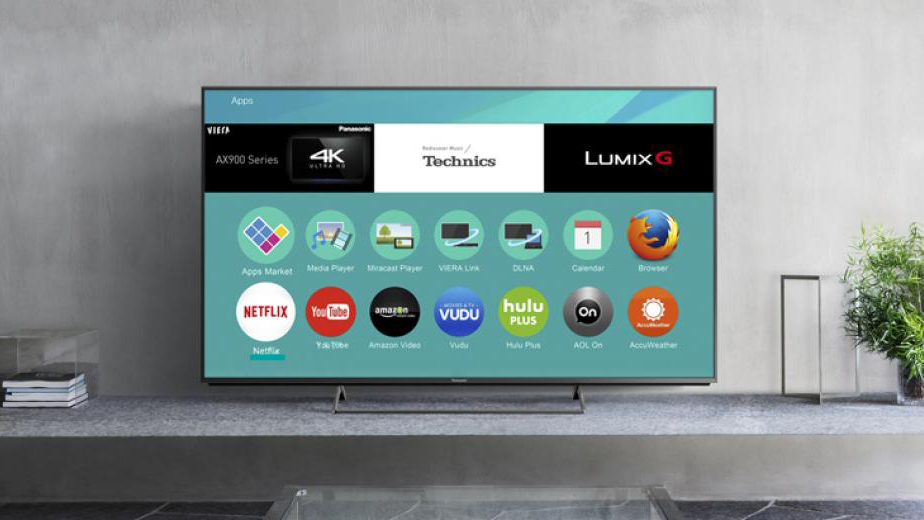
MyHomeScreen (found on 2018 Panasonic TVs)
Setup: OK | Ease of use: Good | Speed: Better | Number of apps: OK | Universal search: OK
- Pros: Fast and responsive.
- Cons: A bit plain.

What's the best smart TV?
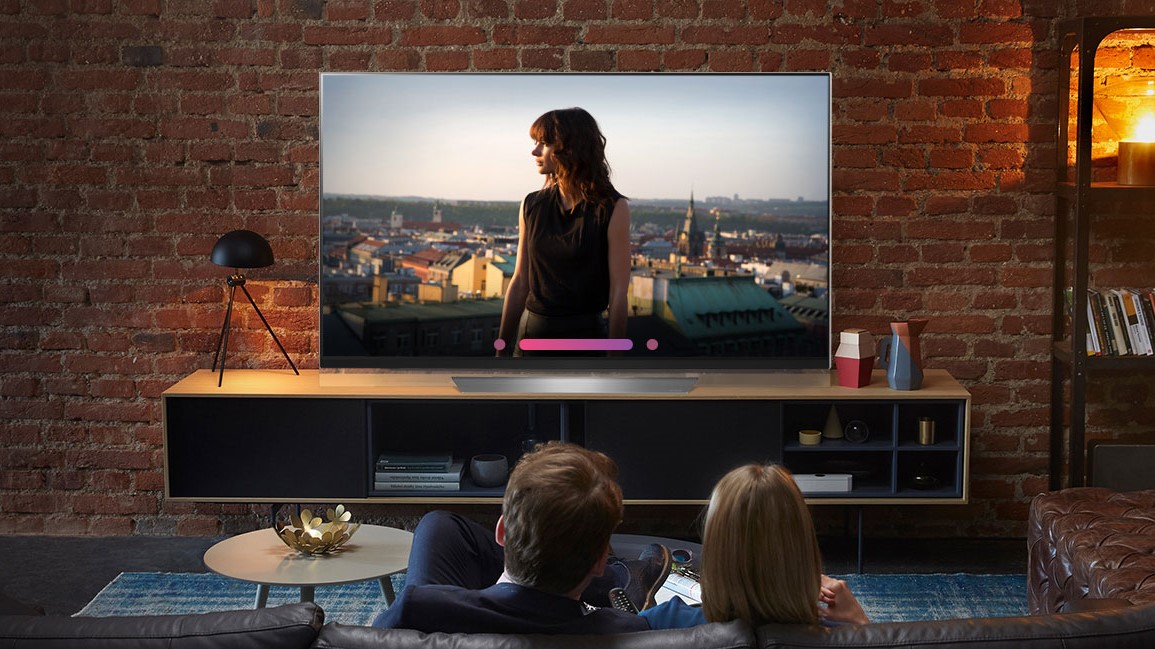
At the heart of the OLED65E8’s smart features lies webOS: LG’s groundbreaking, oft-copied but never bettered interface. This still does a brilliant job of finding and organizing all the myriad content sources available to modern TV viewers, thanks to its simple, attractive layout, and effortless customizability.
LG provides access to all of the main video streaming apps, including the full 4K, HDR implementations of Netflix, Amazon Prime Video and YouTube. UK users can also benefit from Sky’s Now TV platform, as well as Freeview Play, which provides the catch-up TV services of all the main UK terrestrial broadcasters in a handy umbrella interface.
LG in Europe has also recently added Rakuten TV, providing the continent with its first film streaming platform that supports both Dolby Vision HDR and Dolby Atmos sound. The US, of course, can get such streams from VUDU.
WebOS is no longer the be all and end all of LG’s smart features, though. There’s now a much enhanced voice recognition/control system, for instance, which provides straightforward access both to the TV’s features and an exceptionally comprehensive and effective voice search feature. This looks through (some) apps, the internet and the TV listings for answers to your content requests.
The OLED65E8 is compatible with Alexa and (following a recent update) Google Assistant, and even has the potential to monitor and control other devices and appliances on your home network via its ThinQ platform.
Our only issue with webOS is that the single scrolling bar of icons along the bottom of the screen can start to get pretty long once you’ve added a few of your own apps.
- Read the full LG E8 OLED review
- Or read more about webOS smart TVs
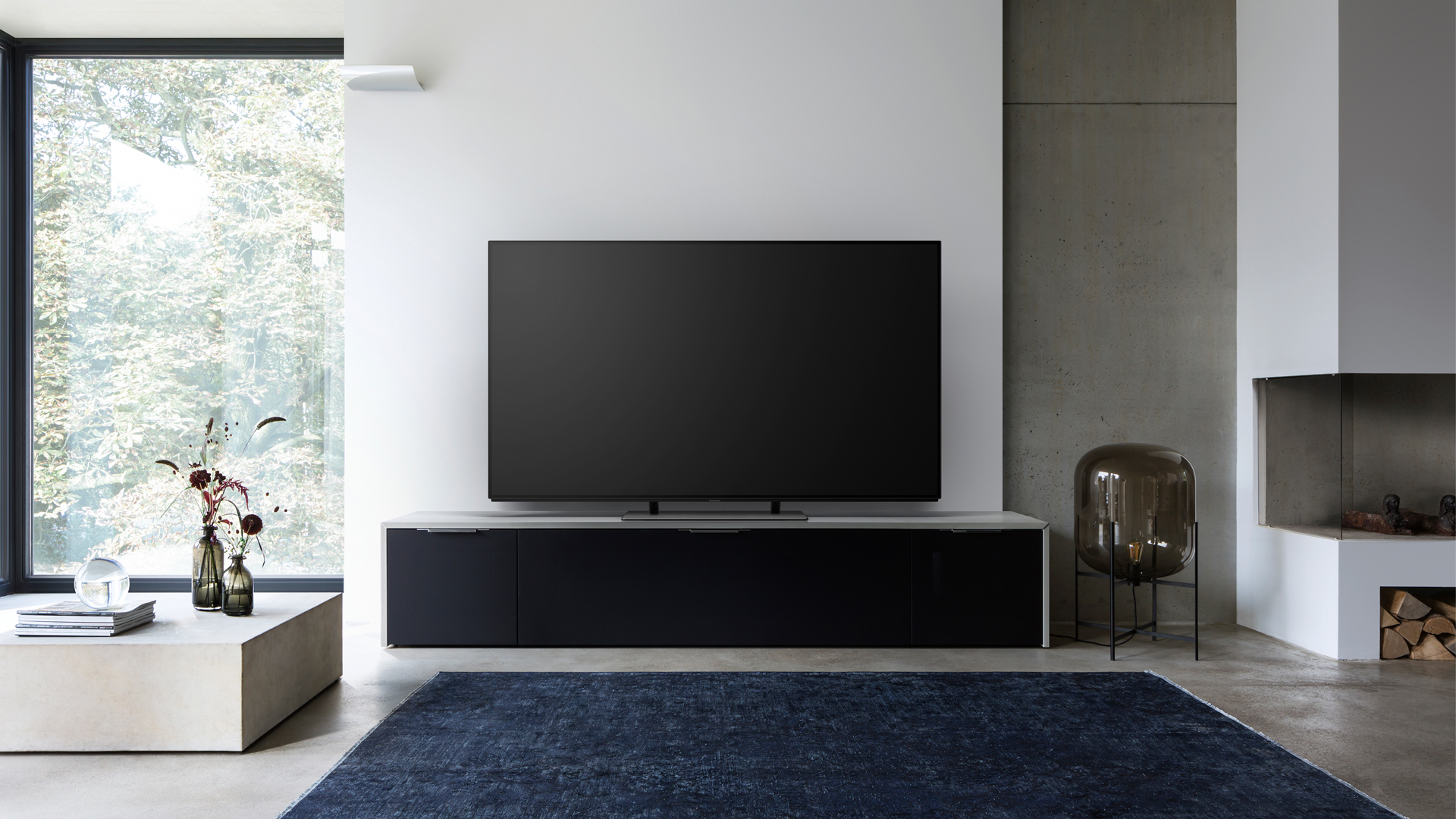
Panasonic’s My Home Screen smart platform is decidedly simple compared to much of the competition, but that’s not necessarily a bad thing. Currently on its third generation, it remains largely the same as the Firefox OS on which it was originally based.
When you press the Home button on the remote, you get a choice of three options: Live TV, Apps, and Devices. This simplicity is the platform’s greatest strength, making it easy to navigate and find things by helpfully storing all the apps in single location; you can also pin your favorite apps to the home page for quicker access.
Since the smart platform is relatively simple, it doesn’t require a vast amount of processing power to operate, which makes it responsive, robust, and free from crashes. My Home Screen isn’t fragmented like some platforms, nor does it bombard you with recommendations – it simply delivers all the streaming and catch-up services you need.
Thanks to Freeview Play, a comprehensive list of catch-up services are included, covering BBC iPlayer, ITVhub, All4, My5, BBC News & Sport and UK Play. The iPlayer app supports 4K and HLG (Hybrid Log-Gamma – the broadcast version of HDR), both of which the BBC trialled during the World Cup.
There’s also Netflix, Amazon and YouTube, all of which support 4K and HDR, along with services like Rakuten and Chili Cinema. In fact the only major streaming service missing is NOW TV.
- Read the full Panasonic FZ952/FZ902 OLED TV review
- Or read more about My Home Screen 2.0 smart TVs

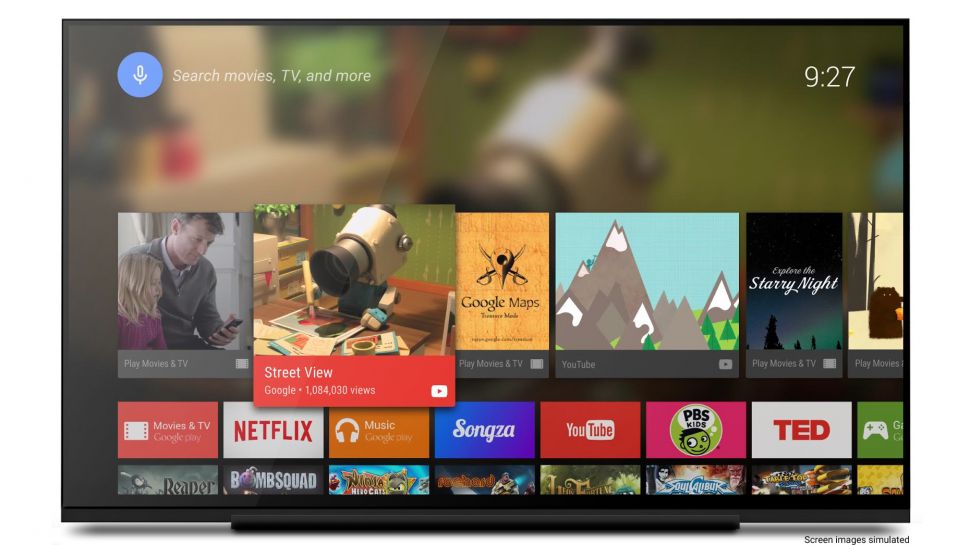
The Bravia A1 OLED combines innovative engineering with stunning design – making it easily one of the best TVs to sport Android TV.
Not only does it look great, but it sounds great, too, despite not having a soundbar. Instead, it uses a pair of sonic actuators, positioned on the rear of the panel which vibrate, creating stereo sound. Bass comes from an 8cm subwoofer in the stand.
As an added bonus, the set’s Android smart platform has Chromecast built-in, making it easy to cast content from a compatible mobile phone. Apps include Netflix and YouTube in 4K.
Picture quality is drop-dead gorgeous: you get a Triluminos wide color gamut display, high color vibrancy, and a 4K Reality Pro picture processor that maximizes image detail. Integral to the set’s overall image success is Sony’s new 4K HDR X1 Extreme image engine, while object-based HDR remastering does a great job too, making regular SDR TV look like HDR.
If you’re looking for the top Android TV display, the A1 is the model to beat.
- Read our full Sony Bravia A1 OLED review
- Or check out our page for Android smart TVs

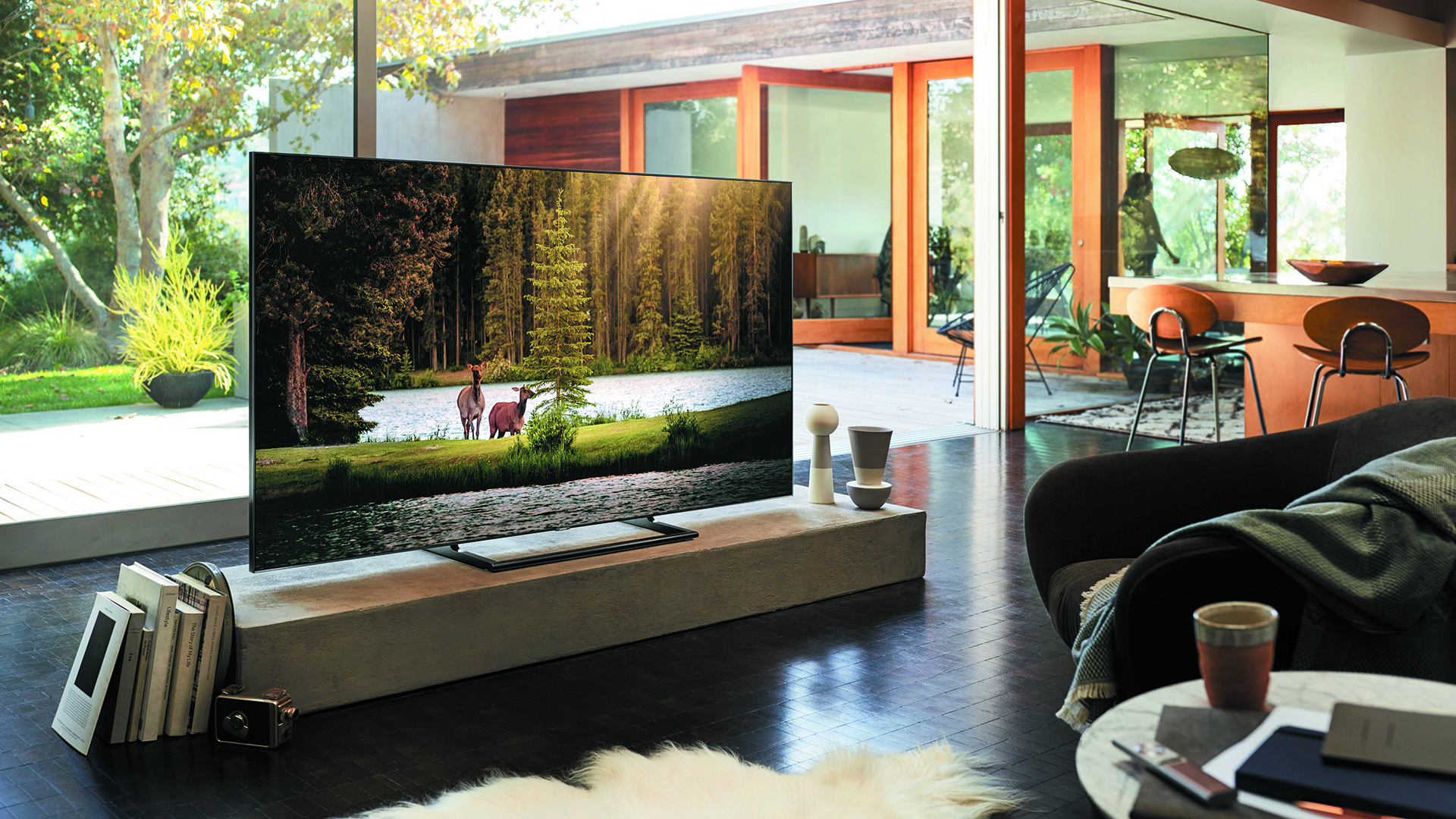
While the 65Q9FN’s Smart TV system is based closely around the Eden platform Samsung has been busy refining for the past couple of years, expect a few tasty new morsels that add to the experience without taking anything away.
For starters there’s now compatibility with Samsung's SmartThings platform, which provides an on-screen hub for monitoring and even controlling other smart devices (fridges, washing machines, lights etc) on your network.
There’s also much better integration of the TV listings and live broadcasting into the TV’s content searching features: there are now hour-by-hour show recommendations, for instance, as well as TV shows getting much more prominence in the content browsing menus.
Samsung has delivered enhanced interactivity with your smartphones and tablets too, as well as some seriously cool new gaming related features.
Overall, a slick, easy to use and helpfully customizable interface belies the impressive sophistication and comprehensiveness of Samsung’s latest smart TV engine.
- Read the full Samsung Q9FN QLED TV review
- Or read more about Samsung Smart Hub and Tizen OS

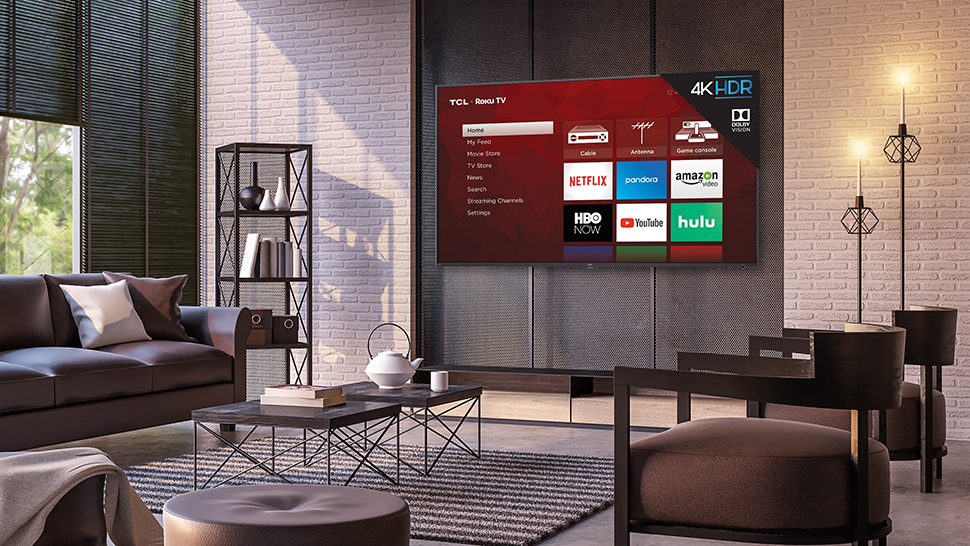
Once you get this TCL TV up and running, you’ll be met with the familiar veneer of Roku TV – an egalitarian operating system that handily retains its top spot as (arguably) the best operating system year after year. It’s intuitive to use, if a bit boring, and its lack of ties to a particular streaming platform allow it to point you to all the places content can be found without bias.
That last bit is important, especially if you’ve ever used an Apple TV or Amazon Fire TV, both of which would much rather have you stream from their ancillary streaming services over any of the third-party ones. Because Roku doesn’t have ties to a major streaming service – other than a vague deal to include FandangoNow on the home screen of the OS – it doesn’t push you any direction you don’t want to go and happily supports everything from Netflix, Hulu, Sling TV and Amazon, to lesser-known channels like Pluto.tv, tubi, Crackle and others.
That’s to say nothing of Roku’s own streaming service that it launched at the end of last year, which provides its own collection of entirely free movies that change in and out every few months. Most aren’t anything to write home about, but you do get the occasional gem in there.
While it’d be nice to see the inclusion of artificial intelligence and personal assistants on Roku TV – similar to what LG is doing with webOS and Samsung has done with Tizen and SmartThings – all things considered, this is still one of the best TV operating systems and a fantastic TV overall.
- Read our full TCL 6-Series Roku TV review
- What is Roku TV?
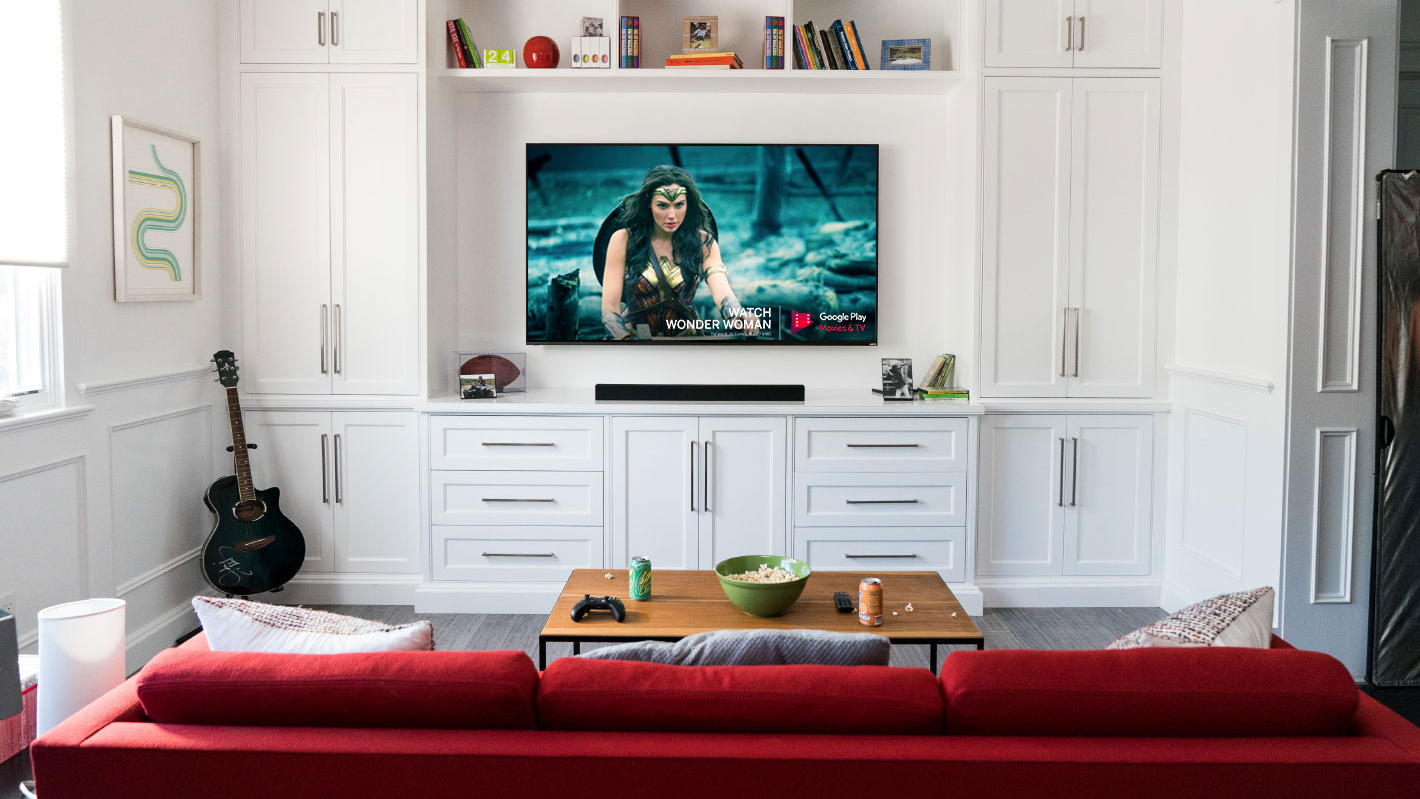
Vizio's 2018 P-Series is a great choice if you're after a TV that performs at an above-average level with great pricing. It has a number of top-shelf features with good black levels, but its operating system is a bit slow.
Thankfully, there’s nothing to complain about with the TV’s 4K HDR performance. In fact, considering how much work it takes for other screens to come close to natural colors, the P-Series is supremely good right out of the box.
- Read our full Vizio P-Series (2018) review
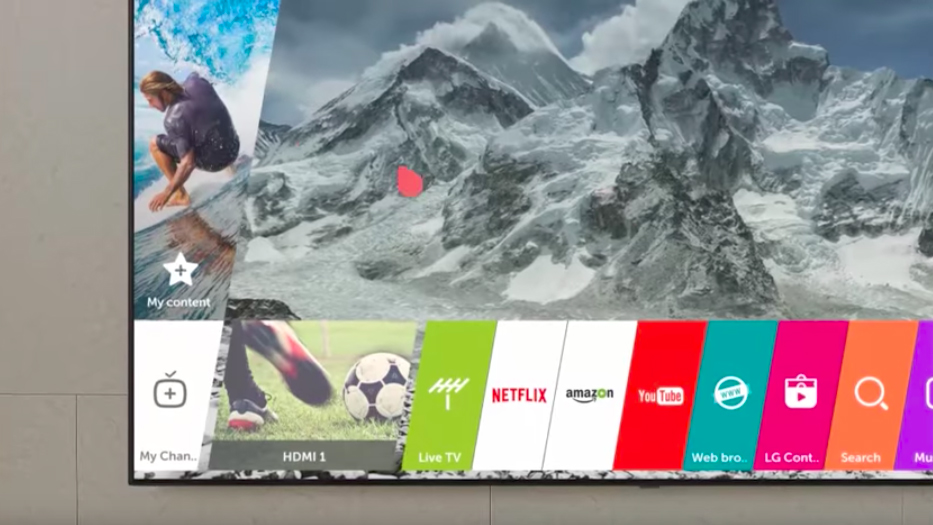
1. LG: WebOS
LG rewrote the rulebook for smart TV platforms with its webOS, starting the trend for minimal, simplified user interfaces back in 2014.
Since then it's been gradually refining its offering: we're now up to the 3.5 iteration of webOS, but LG has wisely chosen not too mess too much with its winning formula.
The UI, which is still built around a Launch Bar for apps, inputs and features, remains tidy and customizable. You can change the running order to best suit how you use the set. If you like to Miracast images from your smartphone, grab the Screen Share app with LG's cursor-based Magic Remote and move up further up the pecking order.
App support is excellent. Netflix streams 4K with both HDR and Dolby Vision, as well as Dolby Atmos audio when available. There's also Amazon with UHD HDR and YouTube in 4K. Other options include Now TV, Sky Store, Wuaki.TV, plus all the main channel catch-up services.
As we’ve seen on earlier webOS builds, these streaming apps remain open and live, even when you navigate away from them. This means you can pause Star Trek Discovery, browse the TV listings for The Walking Dead, and then return to the action.
Other cool features recently added to the platform include 360-degree video playback (from 360-degree videos on YouTube) and an OLED still image gallery. LG screens also have Freeview Play in the UK, which means a full larder of catch-up television.
For US viewers, there's Netflix, Amazon, YouTube and Google Play TV and Movies, as well as Hulu, VUDU, MLB.TV, and FandangoNow.

2. Panasonic: My Home Screen 2.0
If you live in the UK, Panasonic's My Home Screen 2.0 is one of the most customizable smart TV platforms around. Built on the open-source code of Mozilla’s Firefox TV OS, Panasonic's My Home Screen 2.0 smart TV interface combines an intuitive minimalism with extensive customization options.
The platform looks simple but has some inspired functionality: the home screen launches with three buttons (Live TV, Apps and Devices), but you can pin more as required, perhaps for a favorite streaming service, or a specific input. There are now also folders for multiple users, while a My App button on the remote can be customised for faster access to favourite content. A revamped Media Player supports 4K HDR10 and HLG HDR, meanwhile.
App provision is good. Netflix streams in 4K with HDR, and Amazon Video and YouTube also offer 4K support. Catch-up TV service support is integrated through the provision of Freeview Play. This includes iPlayer, ITVHub, Demand 5 and All4, and usability is great across the board.
The OS is extremely convenient to live with, yet powerful enough to cater for a variety of different users, be they family members who just want their favorite channels pinned to the home screen, or TV enthusiasts keen to dive quickly between multiple sources.
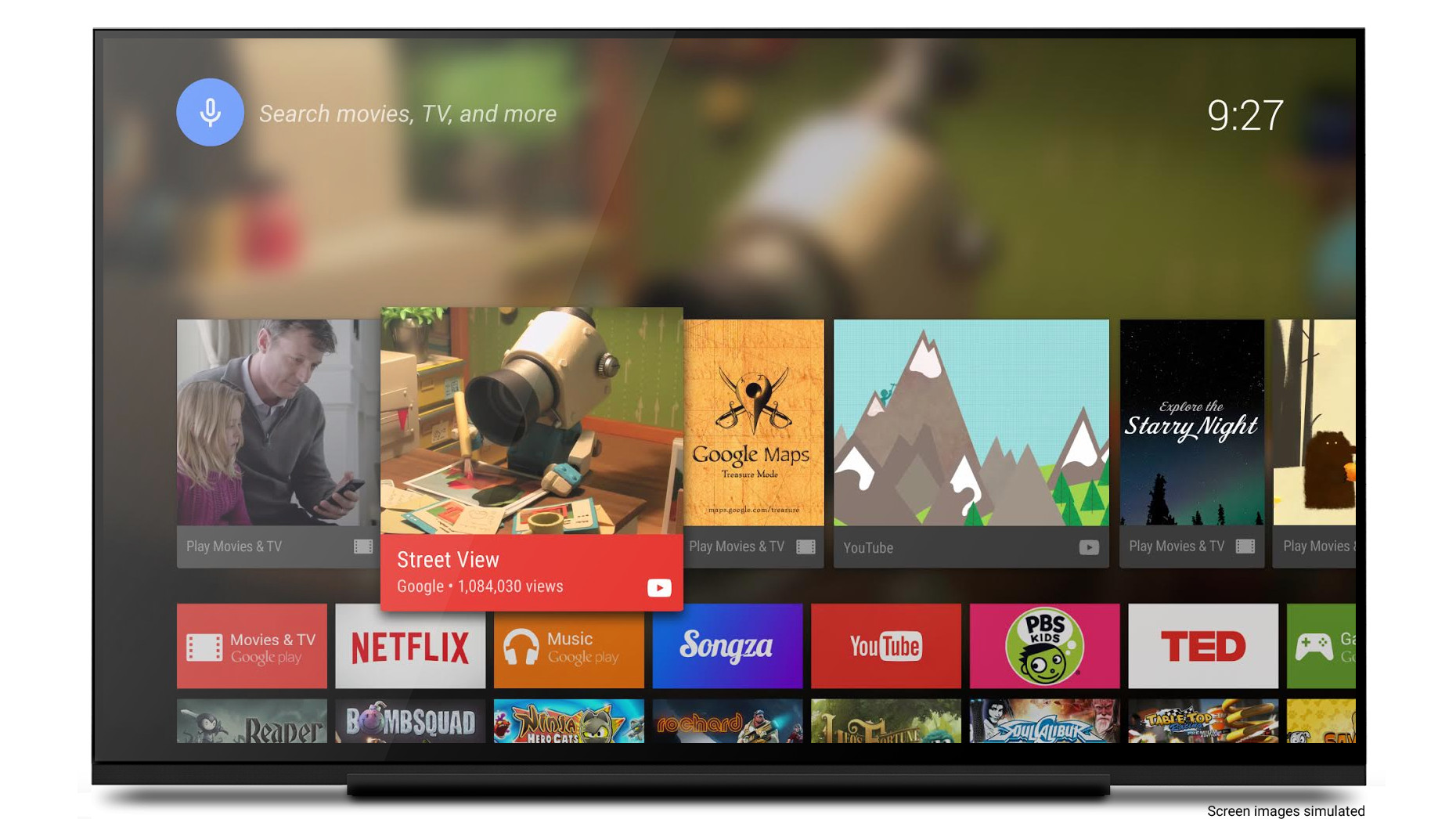
3. Sony: Android TV
Android TV is the nearest the smart TV universe has to a standardized operating system, but there are still variations between brand executions.
Sony has the most comprehensive Google solution. For UK viewers, it has rather cleverly layered a YouView program guide platform on top, deftly addressing one of Android TV’s big weaknesses – catch-up TV provision. This YouView app ensures that all the main catch-up services are provided, and accessible via a roll-back 7-day EPG.
Other supporters of Android TV are Philips (via maker TP Vision) and in the US, Sharp. It’s also available on the Nvidia Shield TV streamer and Razer Forge TV.
While other TV platforms make a virtue of their minimalism, Android stacks the screen with various layers of content. Press the Home button on the remote and up pops a full-screen page that's dominated by a carousel of videos from YouTube and from Google Video.
There’s also a row of specific Sony selected content, followed by apps for Netflix, Amazon Video, links to the Google Play Store, Google Play Music, Google Play Movies and TV, YouTube and so on.
Owners of Android phones/tablets can use their device to control Android TVs via Sony’s TV SideView app, and Google Assistant continues to get more and more useful with its own Android TV integration.
Android TV devices also have Chromecast built-in, which simplifies streaming from mobile Android devices (iOS users can download the AirBuddy app to Google Cast). Controllers from Logitech and Razer also promise gaming without needing a console.
There is a caveat though. In our experience, Android is the least stable of the various smart platforms, with Sony TVs exhibiting more than their fair share of failures – it’s not unusual to be notified that various aspects of the Android platform have stopped working, and some of these messages are completely inscrutable (usually the best option is to simply restart the TV).
To be fair to Google, this is becoming less of an issue as successive Android TV updates roll out – the latest incarnation is particularly slick on the Nvidia Shield, for example – but there's still room for improvement.
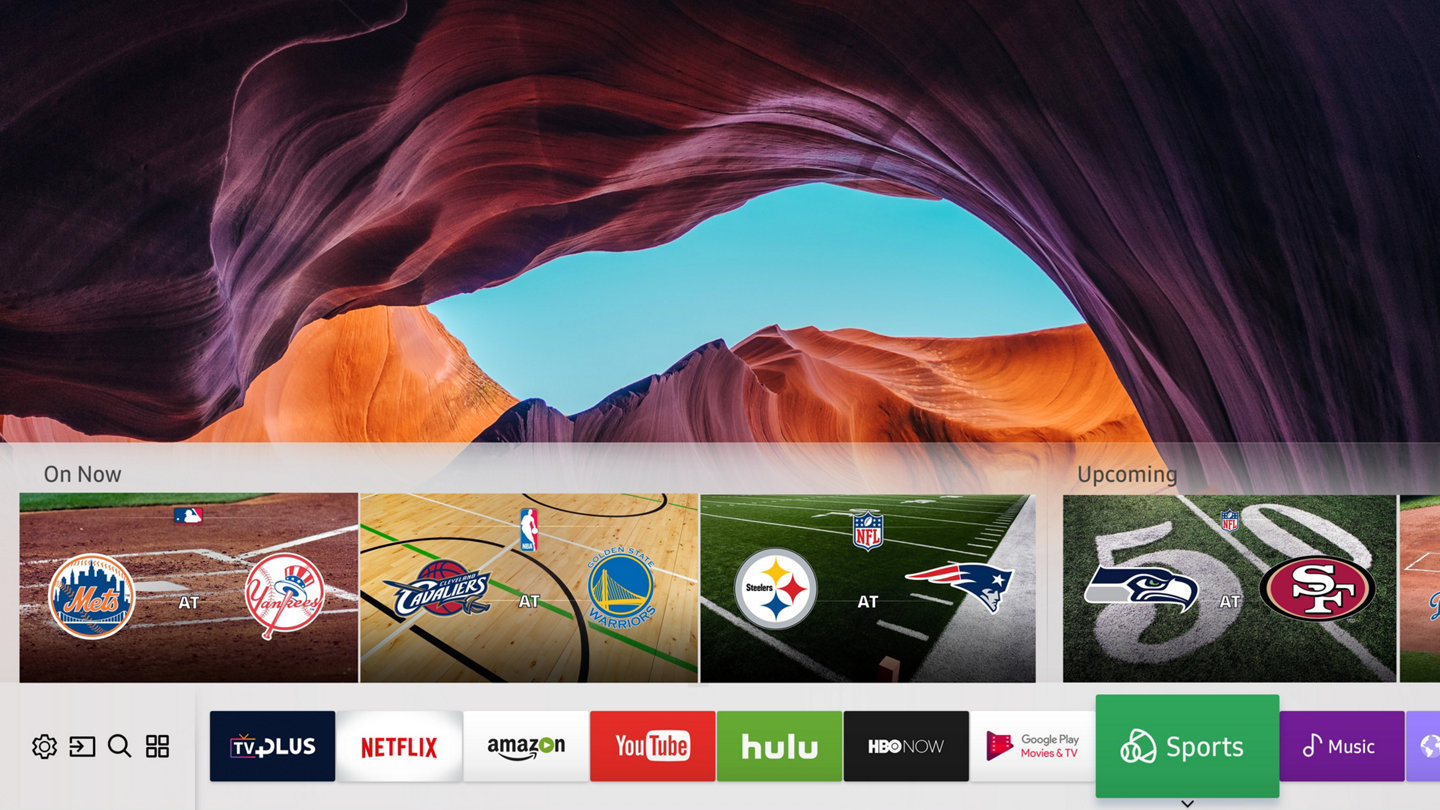
4. Samsung: Smart Hub and Tizen OS
Samsung is another brand keen to keep things simple. Its Tizen OS clearly owes much to LG's webOS interface, in so much as it consists of icons, apps and shortcuts all accessible via icons held a horizontal strip across the bottom of the screen. A dynamically changing ‘Recent’ box in the far-left corner cycles between recently used apps and TV channels.
But it’s not overly intelligent. A featured section in the center promotes apps you haven't used lately, which can feel like irrelevant adverts, and they keep returning. This isn't based on your activity or habits, which is a shame.
We like the fact that on-screen icons can be changed: a sense of identity is welcome when it comes to some AV inputs and key apps you use everyday.
The OS cuts down on clutter, although this sometimes works against navigation – there are plenty of occasions when it's necessary to go hunting for a specific app. Thankfully that's made easier by a Smart Hub multimedia page that divvies up content from apps and from your own USB sticks/home network.
For reasons best known to itself, Samsung has not signed up to Freeview Play, which means it misses out on the elegance of a roll-back program guide. However, it does offer access to all UK catch-up TV apps; BBC iPlayer, ITVhub, All4 and Demand 5 are all here, as is Netflix, Amazon Video and YouTube.
In the US, there's Netflix, Amazon Instant Video, Hulu, HBO Go / HBO Now, YouTube, Spotify and Vudu. (Want even more apps? Check out our 10 best Samsung Smart TV apps gallery.)
There are a few nice extras in the Tizen Smart Hub, too, such as a split-screen option for watching live TV while browsing an app, but Samsung's effort doesn’t quite match LG’s webOS or Panasonic’s My Home Screen OS.
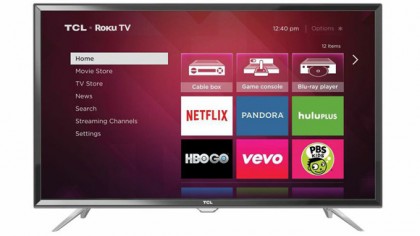
5. TCL, Sharp, Hisense, Haier: Roku TV
Despite Android TV and all the proprietary portals available, there's still room for other connected smart offerings. In Europe, Vestel has its own stripped back smart platform, which is used for TV companies it manufactures for, including Toshiba and JVC. It’s unfancy but does the basics.
In the US, TV maker Element now offers a screen with Amazon’s Fire TV OS built in.
Perhaps the most interesting second division smart OS is Roku TV. Announced back in 2014 for TCL TVs, Roku TV has found support with low-cost US TV suppliers. Today, you can find Roku TV on quite a few Haier, Hisense, Insignia, Sharp and TCL TV models.
As a platform, Roku TV borrows the interface and feature set from the company's popular media streamers, like the Roku Streaming Stick.
What that means is that you'll find a universal search function able to scan over 30 different apps like Netflix, Google Play TV and Movies, Amazon, VUDU and more to find you the lowest price on the TV show or movie you want to watch, as well as around 4,500 channels of content to watch.
Add to that some neat features like a dedicated app that helps you keep track of upcoming movies and TV shows via the My Feed section, and a private listening mode (via headphones that plug into the remote) when you want to watch TV without disturbing the whole house.
Contributer : Techradar - All the latest technology news https://ift.tt/UKCt3N

 Reviewed by mimisabreena
on
Tuesday, November 20, 2018
Rating:
Reviewed by mimisabreena
on
Tuesday, November 20, 2018
Rating:















No comments:
Post a Comment